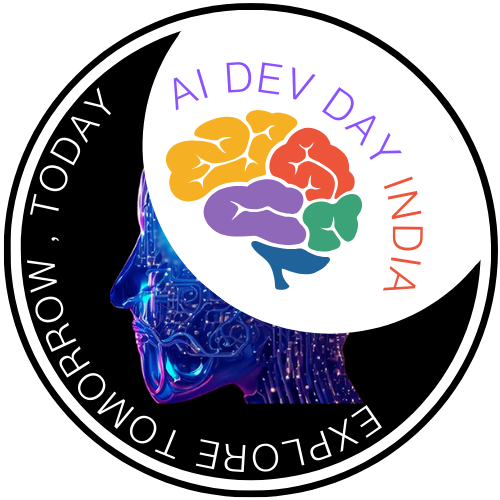5 Surprising Truths About Nvidia's Investment Empire
A calculated campaign to capture value across the entire AI stack has quietly made Nvidia one of the most prolific and strategic venture investors in the world.
Most people know Nvidia as the undisputed leader in the AI revolution, a hardware giant whose soaring market value is built on selling the powerful GPU chips that train and run today's most advanced artificial intelligence. This view, while accurate, is fundamentally incomplete. A closer look at the company's recent investment activity reveals a far more ambitious strategy at play.
While the world sees a hardware vendor, a deeper look at its venture portfolio reveals an aggressive ecosystem architect, one that is strategically funding its own future customers to lock in its next decade of growth. This calculated campaign to capture value across the entire AI stack has quietly made Nvidia one of the most prolific and strategic venture investors in the world. This article explores five of the most surprising takeaways from Nvidia's investment empire. Together, they reveal a company that is not just powering the future of AI, but actively building and owning the entire ecosystem from the ground up.
1. The Pace Isn't Just Fast, It's Accelerating
The sheer scale and speed of Nvidia's investment activity are staggering. In all of 2024, the company participated in 48 venture capital deals. As of October 2025, it has already surpassed that number with 50 deals, a pace that shows no signs of slowing. This count doesn't even include investments from its formal VC arm, NVentures, which has also significantly ramped up its deal-making.
This isn't a case of a few scattered investments. Nvidia is deploying a strategic flood of capital into the AI ecosystem. In 2025 alone, the company has already joined seven "mega-rounds" investments of over $100 million, demonstrating a clear and deliberate strategy to back the most promising and capital-intensive players in the field.
2. It's Not About Financial Returns; It's About Building a "Flywheel"
Unlike a traditional corporate venture capital fund focused on maximizing financial returns, Nvidia's primary goal is to extend its competitive moat. The strategy is designed to create a powerful flywheel effect: Nvidia's funding draws promising startups into its ecosystem by combining capital with tangible benefits like go-to-market support, early hardware access, and CUDA-optimized software stacks.
These companies, in turn, pledge to build on Nvidia's platforms or purchase computing capacity from partners using its chips. This growth attracts more developers, models, and customers to the Nvidia ecosystem, which ultimately drives more demand and spending on its core hardware products. This "checks, chips, and channels" model is a remarkably effective strategy for a hardware company, turning its balance sheet into a tool for ensuring its technology remains the indispensable foundation of the AI industry. If your product makes GPU clusters busier, more efficient, or harder to part with, Nvidia wants a piece of it.
3. They're Betting on Every Horse in the Race
One of the most surprising aspects of Nvidia's strategy is its willingness to invest in direct competitors, particularly in the foundational model space. Rather than picking a single winner in the race to build the most powerful AI, Nvidia has placed bets on nearly every major contender. The company has backed a roster of rivals, including:
- OpenAI
- xAI
- Mistral AI
- Cohere
- Perplexity
- Inflection
This seemingly contradictory strategy has transformed a fundamental market risk - which AI model will win? into a strategic certainty. The goal is not to predict the winning model, but to ensure that whichever model wins, it runs on and drives demand for Nvidia's silicon and software. By funding the entire field, Nvidia doesn't just benefit from the winner; it owns the racetrack itself.

4. They're Building the Entire "AI Factory," Not Just the Machines
Nvidia's investments are not limited to one area; they span every critical layer of the AI stack. The company is systematically funding the construction of a complete "AI factory," ensuring its technology is embedded in every component, from the core intelligence to the end product.
Foundation Models (The "Brains")
At the top of the stack, Nvidia funds the core intelligence that powers AI applications. Its portfolio includes frontier labs like **Mistral AI** and **xAI**, which are developing the next generation of large language models.
AI Infrastructure (The "Nervous System")
To run these models, Nvidia has backed GPU-cloud providers like **CoreWeave** and **Lambda**. These investments are critical because they democratize access to high-end compute, expanding the total addressable market for Nvidia's hardware beyond just the largest tech firms.
Data & Networking (The "Supply Lines")
Recognizing that AI models are useless without data and high-speed connectivity, Nvidia has invested in critical enablers. This includes data-labeler **Scale AI** and optical interconnect firm **Ayar Labs**, which designs technology to move data between chips more efficiently, solving a key performance bottleneck and drastically cutting energy consumption per bit.
Applied AI & Robotics (The "End Products")
Finally, Nvidia is funding companies that turn raw AI compute into real-world value. Investments in humanoid robotics company **Figure AI** and autonomous driving startup **Wayve** create pull-through for Nvidia's software platforms, ensuring its entire stack, not just its hardware, becomes the industry standard.
5. The Strategy Has Bizarre Outcomes and Carries Big Risks
Nvidia's aggressive approach is not without its complexities and potential downsides. The lines between partners, investments, and competitors are becoming increasingly blurry.
The investment in **Inflection AI** in June 2023 serves as a prime example. After Nvidia participated in a $1.3 billion funding round, Microsoft executed a $650 million deal to license Inflection's technology and hire its co-founders and most of its staff. This transaction, structured to sidestep the regulatory hurdles of a formal acquisition, highlights the unusual and fluid nature of partnerships in the current AI landscape.
Furthermore, this strategy is attracting significant external threats. The Federal Trade Commission (FTC) and the Justice Department (DOJ) have launched antitrust probes into the relationships between Microsoft, OpenAI, and Nvidia. While the investigations are in early stages, they could "send a chill into the AI investing ethos," according to industry analysis. The prospect of enhanced scrutiny could force Nvidia and other tech giants to slow their investment pace, potentially disrupting the flow of capital that the AI ecosystem has come to depend on.
Summary: The De Facto Central Bank of AI
Through its vast and calculated investment strategy, Nvidia has transformed itself from a simple hardware supplier into the de facto central bank and standards body of the AI economy. Its capital is a potent force, creating a self-reinforcing loop where its investments drive demand for its core products, further cementing its dominance.
This approach has been a key driver of the current AI boom, providing critical funding and resources to the industry's most innovative startups. The central question remains: As Nvidia embeds itself into every layer of the AI revolution, will its 'checks and chips' model accelerate innovation for everyone, or will growing regulatory scrutiny challenge the tech industry's ultimate meta-bet?




